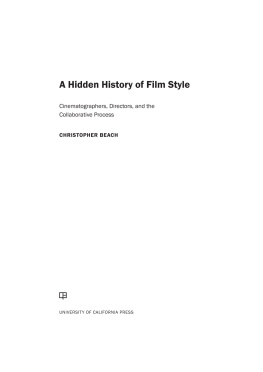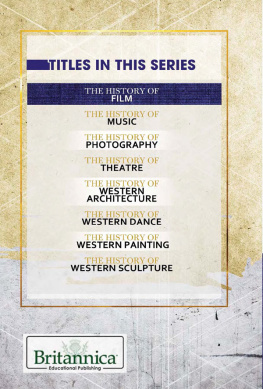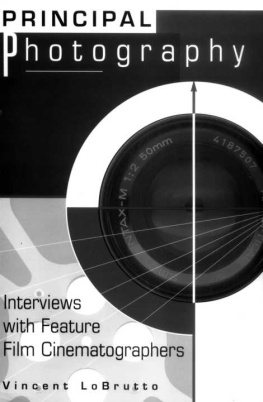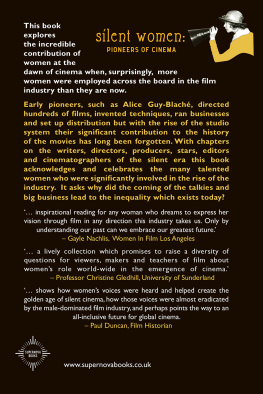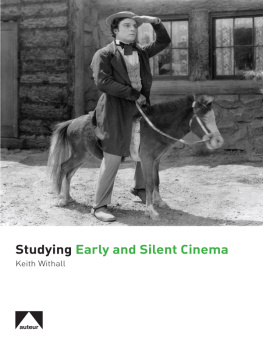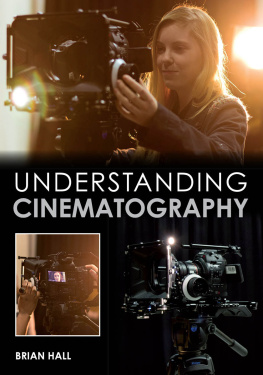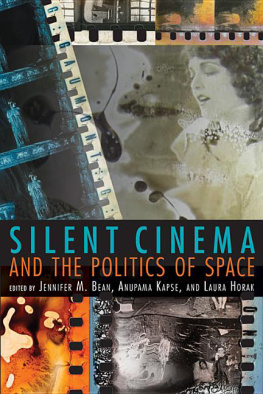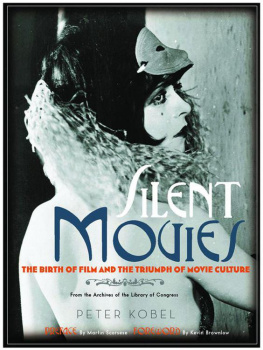I would like to thank Dartmouth College for offering me appointments as Visiting Scholar for the academic years 201011, 201213, and 201314. The use of the Dartmouth College Library and its Jones Media Center has been instrumental to my research as well as the production of images for this book. I have also made significant use of the Margaret Herrick Library of the Academy of Motion Pictures Arts and Sciences. Particular thanks go to special collections librarian Barbara Hall for her help in finding archival materials that have added depth to my research.
Several people have given generously of their time and energy in helping me to complete this book and clarify its ideas. Kathryn Ragsdale read several chapters of the book at an early stage. Patrick Keating read the entire manuscript and provided comments that were both supportive and uniquely well-informed. John Bailey offered valuable insights from the perspective of a professional cinematographer.
I am extremely grateful for the support of the Academy of Motion Pictures Arts and Sciences. As a recipient of the Academy Film Scholars award in 2013, I received financial support that allowed me to complete the book, as well as a much-appreciated vote of confidence in the project.
Finally, the most profound thanks go to my wife, Carrie Noland, whose support on all levels has made this book possible.
Introduction
Though it has become fashionable in recent years to proclaim the death of auteurism as a mode of filmic analysis, the auteur theory has remained a dominant paradigm in film studies for the past half century. If many academic film scholars now see the concept of individual creative genius as outdated, auteurism remains central to published film scholarship, to the teaching of film and media, and to popular writing on film. C. Paul Sellors has identified an entrenched auteurism in film studies, or a strong propensity to consider a films director as its author, even among well-informed scholars.
In this book, I seek to complicate this notion of the director as author by foregrounding the role of the cinematographer in the production of the cinematic image. The books central argument is that the cinema represents an interactive collaboration between technology and art, a creative encounter in which the director and the cinematographer personify these two different forces. As a general paradigm, the cinematographer is responsible for discovering, inventing, introducing, and improving new visual technologies that the director can then apply in the creation of cinematic art. However, the functions of the cinematographer and director are by no means mutually exclusive, nor are they rigidly fixed. The work of the cinematographer inevitably involves aesthetically motivated decisions, decisions based not only on a technical understanding of film stocks, lighting, and lenses but also on an aesthetic understanding of composition, light and shadow, and texture and color. In the creation of cinema, technological and aesthetic elements build upon and mediate each other through the process of collaboration. Unlike still photography, an art form in which one individual is responsible for adapting technology to the creation of art, cinema is the result of a complex set of interactions between two individuals, each of whom contributes to the actualization of an imagined universe.
Thomas Schatz has noted that the closer we look at Hollywoods relations of power and the hierarchy of authority,... the less sense it makes to assess filmmaking or film style in terms of the individual directoror any individual, for that matter. I agree: no one person involved in the production of a film can claim a privileged status as its author. In fact, the history of American filmmaking is full of cases in which the films producer, screenwriter, cinematographer, actors, production designer, editor, or special effects supervisor can take as much credit for the creation of a film as its director. During the studio era, for example, studios often hired a more experienced cinematographer to work with a less experienced director. The veteran cinematographer James Wong Howe was hired to work with directors such as Daniel Mann and Joshua Logan, overseeing many aspects of the production while teaching these new directors the techniques of filmmaking. In making Citizen Kane, the novice director Orson Welles relied heavily on the experience and talents of cinematographer Gregg Toland, who designed and executed much of the visual plan of the film. More recently, Woody Allen developed significantly as a visual director as a result of his multifilm collaboration with Gordon Willis.
The failure of most film scholars to look beyond the creative impact of the director represents an unwillingness to examine more closely the circumstances behind the production of films. It is certainly easierat least on a formal levelto analyze films in terms of the work of individual directors; their corpus can be dissected and explained in terms of a unifying style, vision, career trajectory, or set of thematic or theoretical concerns. This focus on the director avoids having to examine the complex patterns of interaction among the large number of artists and technicians who collaborate on any given film. Peter Wollen has gone as far as arguing that if someone other than director plays a decisive role in the making of a film, the film becomes inaccessible to criticism:

